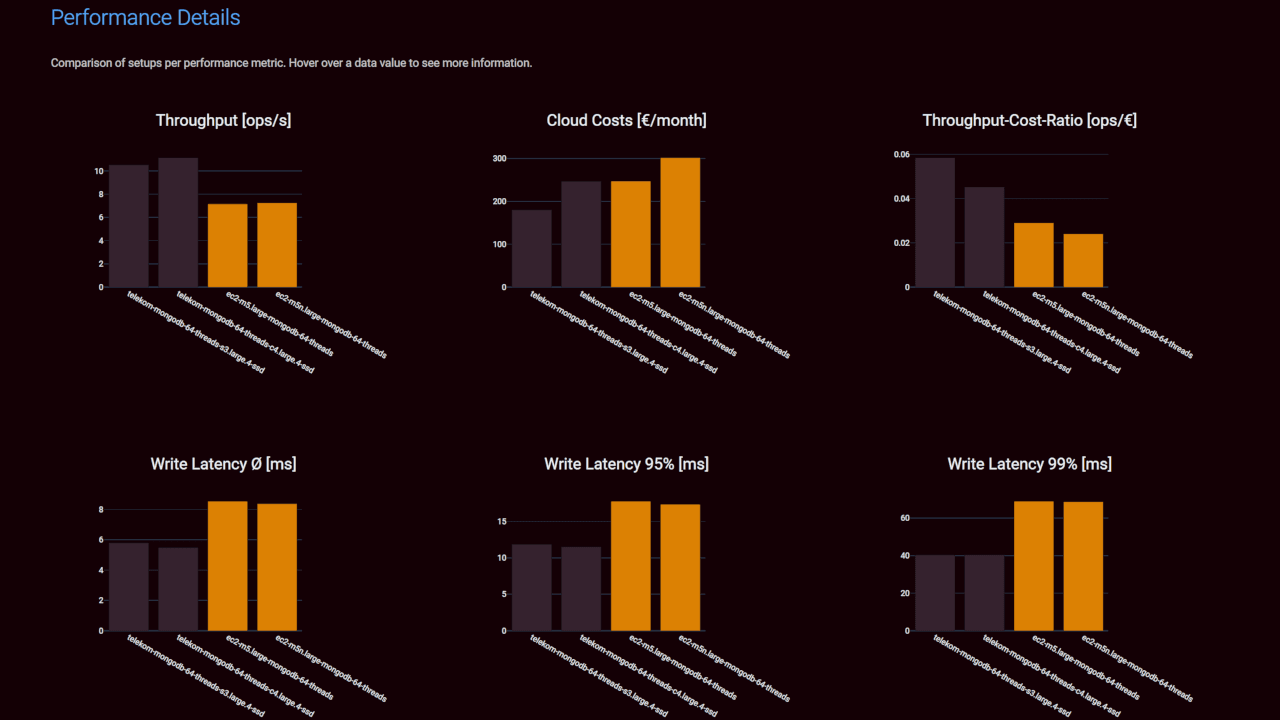The Perfect Cloud and Database Selection
Which database is the right one for your workload and purpose?
What VM types and how many instances do you need?
Database Benchmarking provides you with a reliable, quantitative basis for decision-making that shows you the crucial performance characteristics of each cloud database setup.
Find the optimal setup for your software application and reduce risks and wrong decisions.
500
available, ready-to-use database technologies.
20.000
available cloud resources.
100 million
possible setup configurations.
cloud database benchmarking platform
Critical: the Right Database Selection Process"
IT decision-makers often do not pay much attention to selecting the right database. This is a historical inheritance from the 1990s, when database selection was primarily a cost issue. However, the market and requirements have changed.
The wrong choice of database and cloud resources can quickly become a serious technical and business risk in data-intensive IoT, AI or eCommerce applications. Often, the wrong choice results in oversized cloud infrastructures and costly rework of the application.
This can be actively prevented through benchmarking.
When selecting a database, decisions are often made only according to formal criteria such as SQL or NoSQL, or according to the underlying data schema such as relational, document, key-value or wide-column store.
However, these are not the right questions to ask yourself at the beginning of a database selection process.
In Detail: the 5-Step Cloud Database Selection Process

Cloud Databases: Self-Managed vs. DBaaS
benchANT enables you to benchmark cloud databases. But what are cloud databases anyway?
Cloud databases are distributed database systems that run on cloud resources (public, private or hybrid). There are three main technical characteristics.
On the one hand, self-managed databases that are operated on virtual machines (VMs).
And secondly, Database-as-a-Service (DBaaS) offerings that are either partially or fully administered by the database or cloud providers.
In the first instance, the choice seems to be simply a question of cost and organization, which solution better suits your corporate structure. But here, too, there are significant performance differences that you should take into account.
It’s the Cloud, stupid!
Scientific research has demonstrated significant influences of cloud resources on database performance.
For example, the same database configuration can have completely different performance characteristics with one cloud provider than with another - and this can be different again for a different database technology and workload.
These cloud influences were previously unknown and are not taken into account when selecting suitable cloud resources for database operation. At the same time, however, they represent a significant optimization potential.
The right cloud resources are an essential performance component. This becomes very clear in our benchmarking analysis of different cloud providers.
Optimisation and Planning with Cloud Database Benchmarking
USE CASE
Capacity Planning
USE CASE
Cloud Cost Optimisation
USE CASE
Version Monitoring

